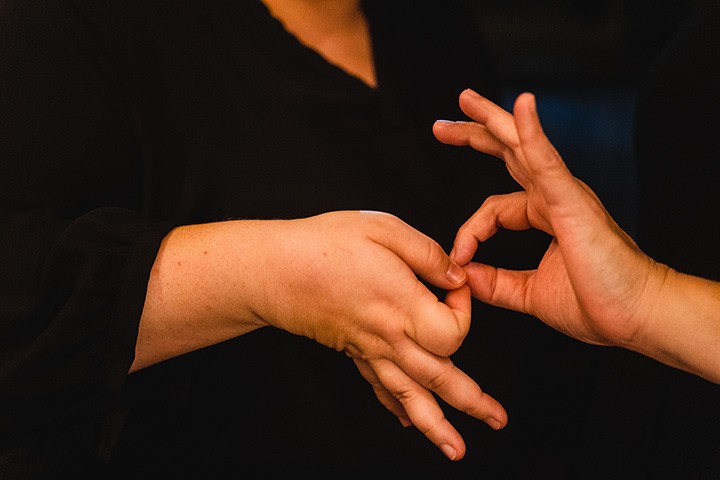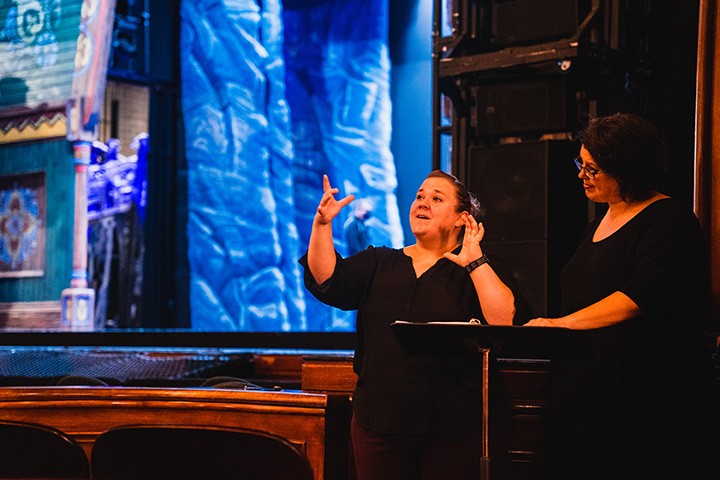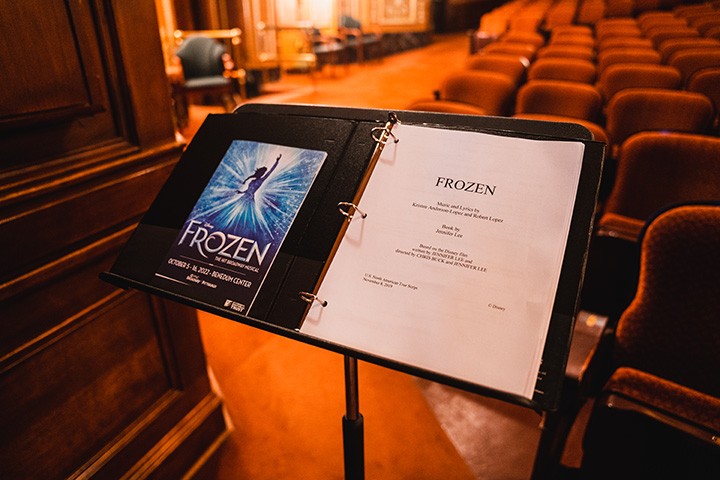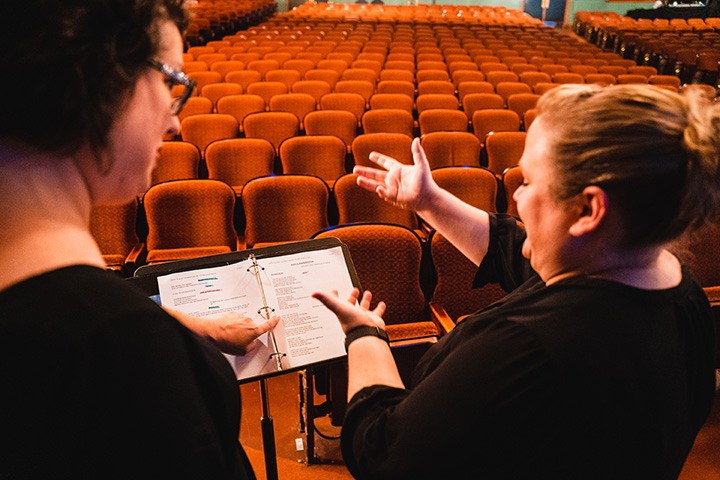Alison Bartley and Heather Gray have spent weeks rehearsing for Frozen — the latest Disney on Broadway show to come to the Benedum Center as part of the PNC Broadway in Pittsburgh series. Meticulously reading the script. Listening to the sound track on repeat. Getting to know the show front to back.
Bartley and Gray aren’t performing under the lights, though. Nor are they musicians in the pit, stagehands in the fly loft or production crew members behind the curtain. No, the pair are certified sign language interpreters, and they are providing access to the Deaf and Hard-of-Hearing community.

Sign language interpretation has been offered at PNC Broadway in Pittsburgh shows since 2001.
According to Vanessa Braun, Manager of Employee Engagement & Director of Accessibility for the Pittsburgh Cultural Trust, sign language interpretation is the longest continually-running accessible service the organization has on offer. Each Sunday matinee performance of a PNC Broadway in Pittsburgh show provides sign language interpretation by default. The program began in 2001.
“ASL is its own language, so by offering it on a scheduled date and time we are bringing down a communication barrier between the show and its Deaf audience,” Braun said. “It is important to the Cultural Trust to be as accessible as possible in all our programming and therefore we also offer ASL and other services upon request.”
As Bartley and Gray explained, interpreting something like a Broadway show goes well beyond merely translating lines from a script. As interpreters, they also need to convey emotion, tone, intention, humor, and more in order to express the full scope of an on-stage scene. And in some cases, English anachronisms just plain don’t apply to American Sign Language.
“For example, English idioms, if interpreted at face value, don't make sense to a Deaf audience member who is strongly part of Deaf Culture,” Bartley said. “In the same way every language has its own nuances and culture associated with it, American Sign Language does too.”

Alison Bartley, left, and Heather Gray, right, in front of the Benedum Center stage.
But — and both Bartley and Gray were quick to point this out — their emotional and expressive output does not mean they, as interpreters, are also performers. Instead, they are there to provide equal access while the audience directs their attention at the trained professionals on stage.
“I would never paint some whiskers on my cheeks with eyeliner and think that I could ‘perform’ Cats,” Gray explained. “The interpreters are there for accessibility.”
As Bartley and Gray prepare to provide that access, they aren’t working from any specially crafted materials. They have access to an official script, they listen to the soundtrack, and they see the show for themselves to experience the narrative pacing. Beyond that, it takes judgment calls on their part to decide the most effective way to interpret the show for Deaf and Hard-of-Hearing audiences.

Sign language interpreters use the show script as their main guide.
When it comes to the most recent PNC Broadway in Pittsburgh show — Frozen — a good example of their judgment comes during the famous “Let It Go” costume change. The actress portraying Elsa is actively singing as the change takes place, but in that moment the visual takes precedence over the lyrics.
“We need to direct the gaze of the Deaf patrons to Elsa’s platform, so that they can share this amazing technical theater feat at the same time that the hearing audience is gasping,” Gray said. “We can ‘play catch up’ with the lyrics, but it would be a travesty if the Deaf audience didn’t see that moment.”
In the end, it’s all about making sure every audience member in the Benedum Center gets to immerse themselves in the enjoyment of live Broadway theater. From the stunning sets to the sweeping scores, every seat in the house gets to take part in the shared experience of the show.
“Many hearing people find this hard to believe, but there are so many Deaf and Hard-of-Hearing people who love music, especially Broadway music,” Bartley said. “They may experience it differently than hearing audiences, but they want access to the same shows as anyone else.”

Gray, left, and Bartley, right, team up to interpret long shows like Broadway productions.
And, of course, Bartley and Gray are both lifetime theater lovers themselves. Having the chance to both experience world-class shows while also providing access to the Deaf and Hard-of-Hearing community is a pairing they both love.
“I’ve gotten to wear some awesome characters, like a warm coat, and experience what that’s like for an evening,” Gray said. “I have ‘been’ The Phantom, from The Phantom of the Opera. I have ‘been’ Jean Valjean, from Les Mis. I have ‘been’ Grizabella, from Cats. I have ‘been’ King George, from Hamilton.”
The next time you find yourself waiting for the curtain to rise at a Broadway show with sign language interpretation, come prepared with some basic signs and say hello to your fellow audience members who are Deaf and Hard-of-Hearing.
“Start a conversation,” Gray said, “and the interpreters will be there to facilitate the communication.”
Interested in purchasing seats for a future PNC Broadway in Pittsburgh show’s sign language interpreted section? Tickets can be purchased online or by calling 412-456-6666. Learn more about the Pittsburgh Cultural Trust’s accessibility offerings and find the full PNC Broadway in Pittsburgh sign language interpretation schedule at TrustArts.org/TheaterAccessibility
Want more? Join our email list!
Want to hear more about what's going on in the Cultural District? Sign up for the Pittsburgh Cultural Trust's mailing list.
